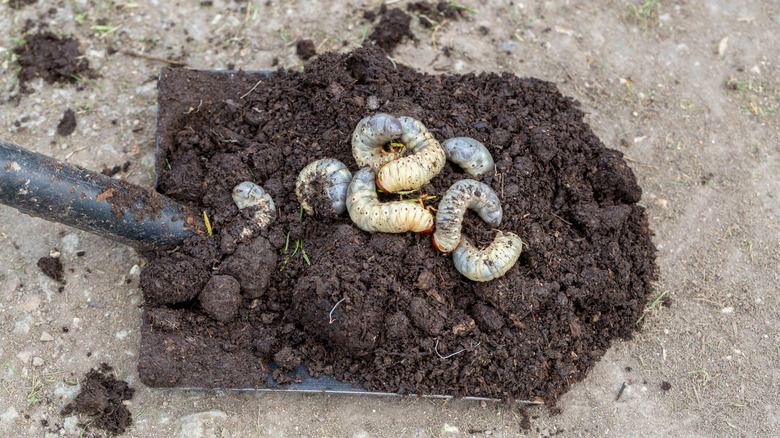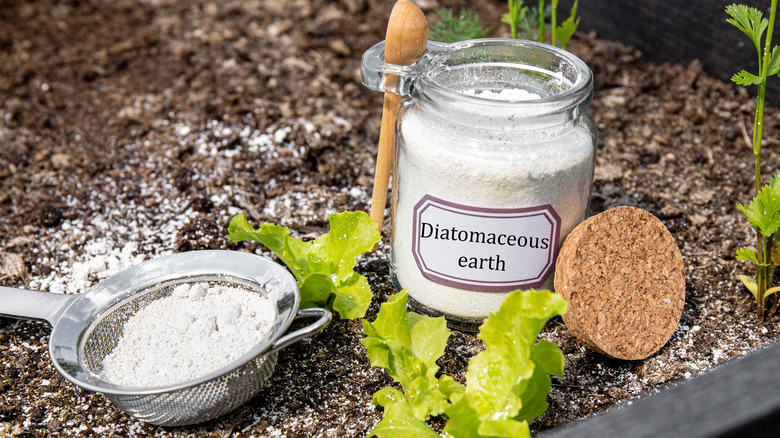Protect Your Lawn From June Bugs With This Garden Staple
Ah, summertime! Our yards become the centerpiece of our outdoor leisure activities, from sizzling barbecues to garden lounging. However, lurking in the shadows, or more accurately, the lawn soil, a small yet formidable enemy of June bugs could be on a stealth mission to transform your lush oasis into scenes of desolation. Their ravenous larvae, with appetites disproportionate to their sizes, munch away at the grassroots while setting the stage for more chaos from lawn-digging predators (thinks cranes and raccoons). However, synthetic chemicals aren't the only options for getting rid of June bugs. At the standby is an eco-friendly garden staple: diatomaceous earth (DE).
Diatomaceous earth (extracted from fossilized diatoms) operates as a simple yet brutally effective mechanism against the subterranean adversaries that are June bugs. When the pesky bugs come into contact with DE, the powder's sharp microscopic edges cut through their exoskeletons and internal organs, causing them to perish from dehydration. Diatomaceous earth does more than safeguard your lawn; it's a gift from Mother Nature herself, ensuring your yard remains uncontaminated by toxins from synthetic chemicals. Opt for food-grade DE, a form vetted for safety around your beloved kids and pets, while effective against lawn pests like June bugs. Seeking a recommendation? You could consider the Harris Diatomaceous Earth Food Grade, 4 pounds of which will set you back $12.99 at The Home Depot. But remember, timing is your ally in June bug control; wait too long, and you might cede your lawn to ruin.
Getting rid of June bugs naturally with diatomaceous earth
You want to deploy DE in your lawn in late May or early June to intercept the June bugs before their egg-laying commences and the infamous grubs begin their destruction. However, the efficacy of DE is at its peak under dry conditions. Rainfall is the saboteur in this tale, rendering the powder useless. So, choose a 24 to 48-hour weather window with no rain forecasted. A freshly mown lawn, stripped of excess thatch, becomes the ideal canvas for DE to work its magic.
While DE is a friend to the earth, it poses a hazard to human eyes and airways. At least wear a respirator mask and safety goggles. With a garden duster (like the Harris Powder Duster for $7.99 from PF Harrison) or your hands, scatter DE with finesse, ensuring even coverage while sidestepping the pitfalls of over-application that could send the June bugs into retreat.
Spraying is a noteworthy alternative for using diatomaceous earth in your yard. The concoction, birthed from dissolving 4 tablespoons of dry diatomaceous earth in a gallon of water and stirring until it's sticky, invites application with a garden sprayer or spray bottle. Count on this approach for uniform coverage and optimized soil contact. Yet, vigilance remains non-negotiable. Reapplication of DE (ideally weekly for a month) goes a long way to solidify your dominance over June bugs. In addition, reengage with DE in the aftermath of an unforeseen rainstorm a few hours post-application.


